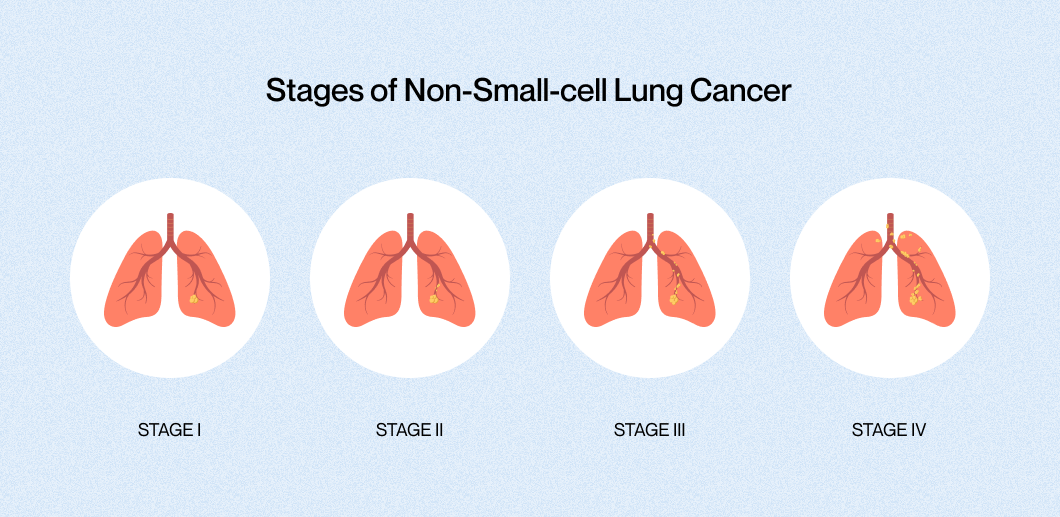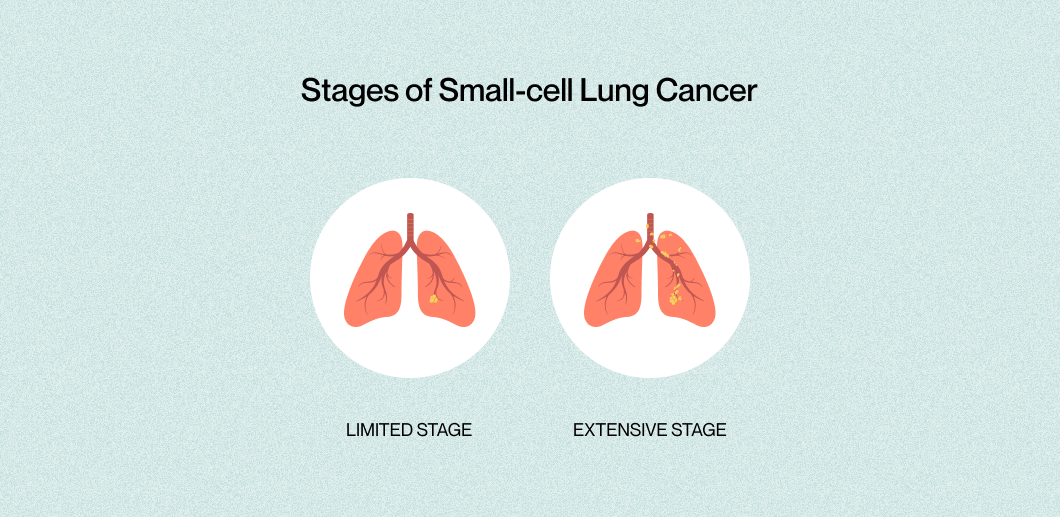Screening for Lung Cancer
Lung cancer, if discovered at an earlier stage when it is small and has not spread, has a higher chance of being treated successfully. Lung cancer does not usually produce symptoms until the disease is well advanced. Even when lung cancer causes symptoms, many individuals may mistake them for other diseases, such as an infection or long-term smoking effects.
If you’re at higher risk for lung cancer, your doctor may recommend a screening examination to identify cancer early. People who smoke or have previously smoked, and those who are 55 to 80 years old, should have yearly screenings. Your doctor should also talk with you about the risks and benefits of lung cancer screening. If you are at an increased risk for lung cancer, your doctor can explain how your risk and the benefits of lung cancer screening may apply to you. Your doctor can also discuss what happens during screening and where to get your yearly screening test. Your health care team can assist you in determining whether your insurance will cover it.
In individuals with a greater risk of lung cancer, low-dose Computer-tomographic (LDCT) scans may assist in the detection of lung cancer. Scans are more effective than X-rays in detecting abnormal sections of the lungs. However, LDCT screenings aren’t always effective in detecting early lung cancer or any lung cancer at all.
Screening should only be done at facilities that have the right type of equipment and that have experience in the tests for lung cancer screening. The facility should also employ a team of experts to give patients the best care and follow-up if the screening results are abnormal. You may not have access to the right sort of healthcare facility near you, so you’ll need to travel further away for your screening.
Lung Cancer Diagnosis
See your doctor immediately if you believe you have lung cancer symptoms.
They will examine your medical history, check your risk factors, and perform a physical examination. If required, your doctor may then advise further testing.
Physical Exam
Your doctor will first ask about your symptoms and medical history. They’ll take your vital signs, such as heart rate and blood pressure, listen to your breathing, and check for swollen lymph nodes. If they detect anything unusual during the examination, they may order further testing.
Initial Testing
If you have already developed symptoms that might be linked to lung cancer, you may need certain tests to discover the source of your illness. In certain circumstances, this type of examination can identify cancer.
Your doctor will instruct you on how to prepare for various tests, such as:
- Imaging: An abnormal mass can appear on imaging tests, such as X-ray, MRI, CT, or PET scan. These scans provide greater detail and reveal smaller abnormalities. You’ll be given a radioactive chemical for this procedure. On the pictures, abnormal areas of bone will be highlighted. Staging is also done with MRI, CT, and PET scans.
- Sputum cytology: If you have phlegm when you cough, a microscopic examination may show whether cancer cells are present.
- A biopsy can determine whether tumor cells are malignant.
A tissue sample may be taken through:
- Bronchoscopy: A lighted tube is inserted down your throat and into your lungs while you are under anesthesia, allowing for closer inspection.
- Mediastinoscopy: A cut is made at the base of the neck. A lighted instrument is inserted, and samples are taken from lymph nodes with surgical instruments. It’s usually done under general anesthesia in a hospital.
- Needle biopsy: A hollow, flexible needle is inserted between the chest wall and the suspicious lung tissue using imaging tests as a guide. A needle biopsy can also be utilized to check lymph nodes.
Tissue samples are sent to a pathologist for examination. If the diagnosis is cancer, further tests, such as a bone scan, may be necessary to determine if it has spread and to assist with staging.
Testing for the Spread of Lung Cancer
A CT scan is frequently the first imaging examination. This is a type of exam that scans your body in multiple locations while also generating a more accurate picture of your internal organs. Swallowing contrast dye or receiving it intravenously may be necessary. During a CT scan, your doctor obtains an image of your lungs and other organs in which malignancy may have spread, such as your liver and adrenal glands. CT scans may also be used to guide biopsy needles.
Other tests may be required to establish whether and where cancer has spread in the body:
- When your doctor suspects that lung cancer has spread to the brain or spine, they may request an MRI.
- A positron emission tomography (PET) scan is a type of nuclear medicine imaging that uses a radiolabelled drug, or tracer, to collect cancer cells and show the locations where they are present. It may be used in combination with a CT scan for an enhanced image.
- Scans of the bones may be required if cancer has spread to your bones. This entails injecting radioactive material into your vein which accumulates in abnormalities or tumors and then can be seen through imaging.
Stages of Lung Cancer
Stages of cancer are used to predict how far the disease has spread and helped determine treatment options.
Non-small Cell Lung Cancer (NSCLC)
Stage I: The lung is where cancer originates, but it has not yet spread to other organs.
Stage II: The lung and surrounding lymph nodes are the primary tissues affected by cancer.
Stage III: The middle of the chest is where cancer becomes apparent in the lungs and lymph nodes.
Stage IIIA: Lymph nodes can harbor cancer, but only on the same side of the chest where it began to grow.
Stage IIIB: Lymph nodes on the opposite side of the chest or above the collarbone have been affected by cancer.
Stage IV: Both lungs, the vicinity surrounding the lungs, and distant organs have been affected by cancer.

Small-cell Lung Cancer (SCLC)
It has two distinct phases – the limited and the extensive stage.
The cancer is discovered in only one lung or adjacent lymph nodes on the same side of the chest during the limited phase. The extensive stage indicates that cancer has spread to one and then the other lung, into lymph nodes on the opposite side, to the fluid surrounding the lungs, to bone marrow, and even distant organs. Typically, 2 out of 3 people with SCLC are in the extensive stage at diagnosis.

